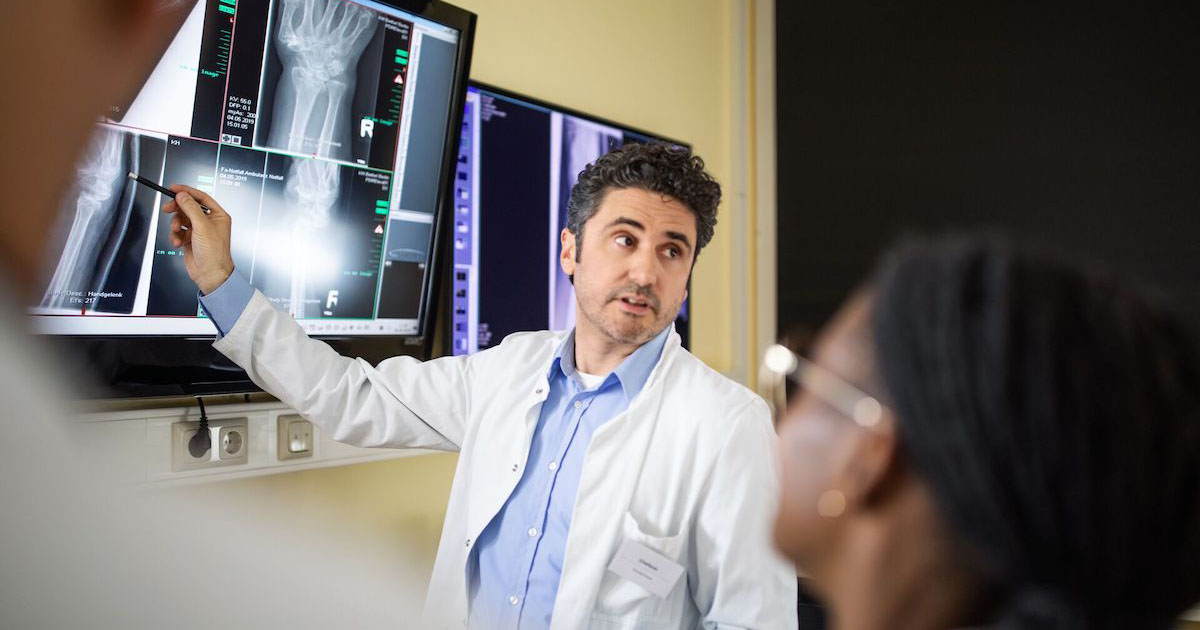In a groundbreaking move, Konica Minolta has unveiled its latest innovation, the Dynamic Digital Radiography (DDR), at the Radiological Society of North America (RSNA) event. This development marks a significant leap forward in medical imaging technology, promising enhanced diagnostics and a more comprehensive approach to patient care.
What is DDR?
Dynamic Digital Radiography, commonly known as DDR, represents a cutting-edge technology that revolutionizes traditional radiography methods. Unlike conventional static images, DDR captures real-time sequences, providing a dynamic view of internal structures. This innovation holds immense potential in the medical field, offering a more detailed and nuanced perspective for diagnostics.
Konica Minolta’s Innovation in DDR
Konica Minolta’s DDR stands out for its technological prowess and innovative features. The system integrates advanced algorithms and image processing techniques, ensuring unparalleled clarity and precision in capturing dynamic images. This commitment to excellence positions Konica Minolta as a frontrunner in the realm of medical imaging.
Benefits for Medical Imaging
Medical professionals can now benefit from enhanced imaging capabilities, allowing for more accurate and timely diagnoses. DDR excels in capturing subtle movements and anomalies that might go unnoticed in traditional static radiography. This breakthrough contributes to early detection and better-informed treatment decisions.
RSNA Event Overview
The RSNA event serves as a pivotal platform for unveiling and showcasing the latest advancements in medical imaging technology. Industry leaders, healthcare professionals, and researchers converge to explore innovations that shape the future of healthcare. Konica Minolta’s presence at RSNA signifies its commitment to pushing the boundaries of medical technology.
Konica Minolta’s Booth Highlights
At the RSNA event, Konica Minolta’s booth was a focal point of attention, with the DDR launch taking center stage. The booth featured live demonstrations, allowing attendees to witness firsthand the capabilities of the DDR system. The interactive sessions and expert presentations garnered significant interest and engagement.
Industry Experts’ Perspective
Renowned professionals in the medical imaging field have expressed their enthusiasm for Konica Minolta’s DDR. Dr. Amanda Rodriguez, a leading radiologist, stated, “The real-time imaging provided by DDR is a game-changer. It adds a new dimension to our diagnostic capabilities and significantly impacts patient care.”
Comparative Analysis with Competitors
A comparative analysis of DDR with existing technologies highlights its superiority. Konica Minolta’s system offers a unique combination of speed, precision, and versatility, setting it apart from competitors in the dynamic imaging landscape.
User-Friendly Interface
One notable aspect of Konica Minolta’s DDR is its user-friendly interface. The system is designed with the end-user in mind, ensuring ease of operation and seamless integration into existing medical imaging workflows. This accessibility contributes to a smoother transition for healthcare facilities adopting DDR.
Future Implications in Medical Technology
The launch of DDR hints at the exciting possibilities for the future of medical technology. As innovations like this become more prevalent, we can anticipate a paradigm shift in how medical professionals approach diagnostics and treatment planning.
Case Studies
Several medical facilities have already implemented Konica Minolta’s DDR with remarkable success. Case studies reveal instances where the real-time dynamic imaging provided critical insights, leading to more accurate diagnoses and improved patient outcomes.
Challenges and Solutions
While embracing new technology, it’s essential to address potential challenges. Konica Minolta has proactively addressed concerns related to radiation exposure, calibration, and integration hurdles, ensuring a comprehensive solution for healthcare providers.
Customer Reviews
Early users of Konica Minolta’s DDR system have lauded its impact on their practice. Dr. James Thompson, a radiology department head, shared, “The dynamic imaging capabilities have transformed the way we approach complex cases. It’s a powerful tool that every radiologist should consider.”
Cost and Affordability
Understanding the financial implications is crucial for healthcare providers. Konica Minolta offers flexible pricing models, ensuring that the benefits of DDR are accessible to a wide range of medical facilities, from small clinics to large hospitals.
Conclusion
In conclusion, Konica Minolta’s launch of DDR at RSNA signifies a milestone in the evolution of medical imaging technology. The system’s advanced features, coupled with its user-friendly interface, position it as a frontrunner in dynamic radiography. The positive reception from industry experts and early adopters suggests a promising future for DDR in shaping the landscape of medical diagnostics.
FAQs
- Is DDR compatible with existing medical imaging systems?
- Yes, Konica Minolta’s DDR is designed for seamless integration with various medical imaging platforms.
- What sets DDR apart from traditional radiography?
- DDR provides real-time dynamic imaging, offering a more comprehensive view of internal structures compared to static images.
- How does DDR contribute to early detection in medical diagnoses?
- The enhanced imaging capabilities of DDR capture subtle movements and anomalies, facilitating early detection and more informed treatment decisions.
- Are there any challenges associated with implementing DDR in healthcare facilities?
- Konica Minolta has addressed potential challenges related to radiation exposure, calibration, and integration, ensuring a smooth adoption process.
- Where can I learn more and get access to Konica Minolta’s DDR?
- For more information and to get access
